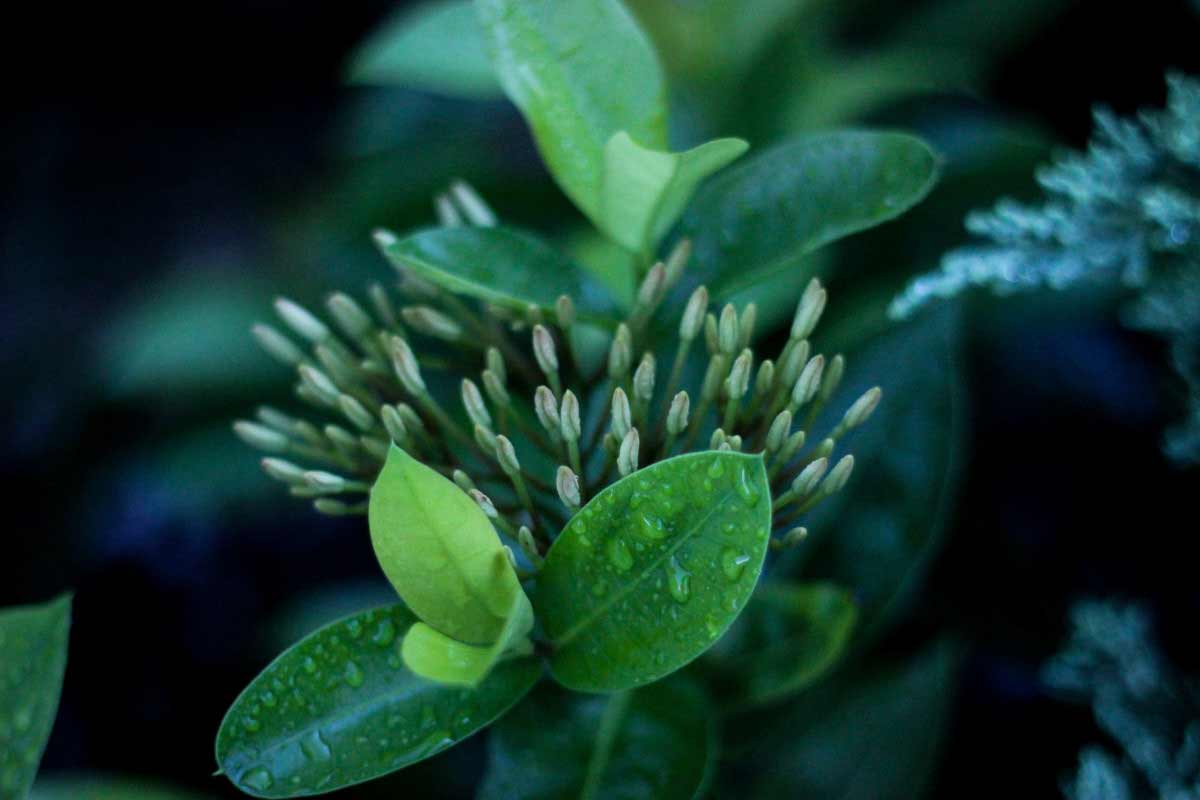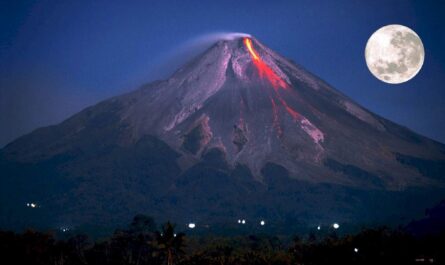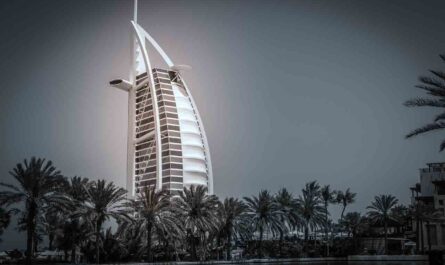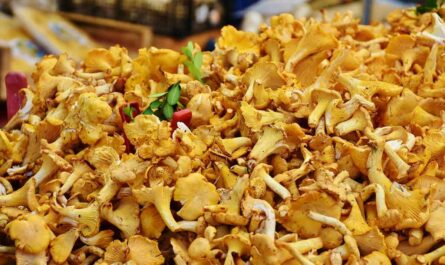Indonesia, a captivating archipelago that sprawls across the equator, boasts a nomenclature as intriguing as its diverse landscapes. The very name of this nation encapsulates a linguistic fusion, drawing upon the rich tapestry of multiple languages. Comprising the Latin word ‘Sind,’ signifying ‘Indian,’ and the Greek term ‘Nessos,’ evoking ‘island,’ Indonesia harmoniously melds linguistic threads to weave a unique identity. This lexical amalgamation mirrors the nation’s tapestry—diverse, vibrant, and steeped in cultural intricacies. Let’s learn some more interesting facts about these fantastic islands.
Interesting Facts About Indonesia: History, Culture, Travel
2. Bali’s Quirky Dental Tradition
Intriguingly, the people of Bali engage in a peculiar dental practice, adding a layer of uniqueness to their cultural tapestry. A quirk that catches the eye and elicits curiosity is the ritualistic filing of their teeth. Notably, the upper six teeth undergo a deliberate reduction, a tradition rooted in a fascinating belief system. This dental modification is not merely an aesthetic choice but a symbolic act aimed at quelling six malevolent qualities that plague the human psyche: anger, confusion, need, jealousy, greed, and drunkenness. The filing process serves as a tangible embodiment of a spiritual journey, a physical manifestation of the quest for inner harmony in the face of these perceived vices.
3. Intriguing Floral Giants of the Indonesian Jungle
Indonesia, a land of lush biodiversity, conceals within its dense jungles the marvels of botanical extremes. One such floral giant, unrivaled in size, is the Rafflesia tuan-mudae, a botanical behemoth that unfolds its petals to reach an astonishing span of 111 centimeters, equivalent to 3.64 feet. Nestled within the Indonesian jungle’s verdant embrace, this colossal flower captivates the imagination with its sheer dimensions, standing as a testament to the astonishing diversity of the archipelago’s plant life.
4. Indonesia’s Breathtaking Biodiversity: A Tapestry of Colors and Wonders
Indonesia, a sprawling archipelago, emerges as a global powerhouse in terms of biodiversity, securing a formidable second place on the world stage. Beyond its azure waters and lush landscapes lie ecosystems teeming with life, boasting some of the planet’s most vibrant flora and fauna. Among its illustrious residents are the critically endangered orangutans, majestic Sumatra tigers, and the elusive Javanese rhinoceros.
An enigmatic addition to this rare ensemble is the Raflecia, a botanical marvel that claims the title of the world’s largest flower. However, the beauty of this colossal blossom comes with a morbid twist—the very name “rafflesia” carries the ominous meaning of “flower of the corpse” or “flower of flesh,” an olfactory deception that mimics the pungent scent of decaying flesh.
5. Borobudur: A Spiritual Marvel Carved in Stone
Borobudur, a testament to Indonesia’s rich cultural heritage, stands as an architectural marvel cloaked in spiritual significance. Comprising 504 Buddha statues and an intricate web of 2672 relief panels, this temple unfolds a narrative etched in stone. The central dome, a zenith of artistic mastery, is enveloped by 72 Buddha stupas, each a testament to the profound symbolism embedded in Buddhism. These stupas, not mere architectural adornments, serve as poignant reflections of a spiritual journey, echoing the profound essence of Buddhism that resonates throughout the Indonesian landscape.
6. Symbolism in Stone: Stupas and Buddhism
Within the confines of Borobudur temple, the presence of 504 Buddha statues and the encircling 72 Buddha stupas unveils a profound symbiosis between architecture and spirituality. The stupas, rising like silent sentinels, encapsulate the very essence of Buddhism. Symbolic structures, transcend mere physicality, becoming conduits to a higher realm. Their presence, not confined to Borobudur alone, resonates across the archipelago, echoing the enduring influence of Buddhism in the diverse cultural mosaic of Indonesia.
7. Java: More Than Just Code in Indonesia
The term “Java” may evoke thoughts of computer programming for many, yet in the Indonesian archipelago, it takes on a whole new meaning. Beyond the realm of code, Java emerges as the name of one of Indonesia’s most beloved islands, renowned for its coffee beans. The richness of Java extends beyond programming languages, resonating with the aromatic allure of coffee.
This island has become synonymous with the art of coffee cultivation, making “Java” a buzzword in the world of coffee enthusiasts. Delving into the cultural and geographical nuances of Indonesia unveils the multifaceted nature of terms like “Java,” transcending the binary realm of code and opening doors to the flavorful landscapes of Indonesian coffee plantations.
8. Indonesia’s Enigmatic Komodo Dragon Habitat
Nestled within the archipelagic splendor of Indonesia resides the legendary Komodo dragon, an awe-inspiring creature that holds the title of the world’s largest lizard. This majestic reptilian giant has staked its claim on a mere handful of Indonesian islands, namely Komodo, Rinca, Flores, Gili Montag, and Padar. These islands, scattered across the Indonesian archipelago like precious jewels, serve as the exclusive domain of the Komodo dragon, rendering Indonesia the privileged custodian of this unique and iconic species.
9. The Pungent Presence of Amorphophallus Titanium
Venture into the world of flora, and an olfactory assault awaits those who encounter the Amorphophallus Titanium, crowned as the most odorous flower to grace the Earth. The sheer pungency emanating from this botanical wonder is not a mere whiff but a scent that permeates the air for miles around. Towering up to an impressive two meters in height, this plant is no shrinking violet in size or scent. Native to the exotic landscapes of Sumatra island, its majestic yet odious presence challenges conventional notions of floral beauty. The flower’s unfortunate olfactory resemblance to putrefying meat adds an element of paradoxical allure to its undeniable botanical grandeur.
10. Indonesia’s Soccer Legacy in the Shadows of History
For aficionados of the beautiful game, a historical nugget from the annals of Indonesian soccer lore is bound to captivate. In a twist of football fate, Indonesia holds the distinction of being the pioneer from Southeast Asia to grace the FIFA World Cup stage. The stage was set in France in the year 1938, and the entrants were none other than the Dutch East Indies national team.
However, peeling back the layers of this footballing milestone reveals a fascinating detail—a team with a name steeped in colonial history had a roster exclusively composed of players with Dutch ancestry. Unraveling this enigmatic blend of national identity and colonial echoes, the Dutch East Indies’ journey into the realm of international football is a tale as complex and nuanced as the sport itself.
11. The Enigmatic Giant: Indonesia’s Record-Breaking Python Reticulates
Delving into the heart of Indonesia’s natural wonders, one encounters a colossal inhabitant that solidifies its reputation as the longest snake sanctuary on the planet. Originating from the isle of Celebres, a serpent of monumental proportions, measuring an astonishing ten meters, once slithered into the annals of herpetological records. Today, the Python reticulates, having migrated to the island of Sulawesi, stands as a testament to Indonesia’s surreal biodiversity. This enigmatic giant, with its sinuous grace, weaves a narrative of both awe and mystique, epitomizing the wild allure of the archipelago.
12. Aromatic Oddities: Unveiling the Corpse Flower
Venture deeper into the heart of Indonesia, and you encounter not only botanical giants but also olfactory anomalies. The Amorphophallus titanum, famously dubbed the “corpse flower,” takes center stage as the world’s smelliest plant. Found within the Indonesian landscape, this peculiar species emits an aroma that has been vividly likened to the unsettling combination of the “essence of rotting fish mixed with the essence of rotting onion.” This olfactory marvel, though notorious for its pungency, draws intrigued onlookers seeking to experience nature’s more eccentric olfactory offerings.
13. Palapa Satellite System: Bridging Nations in the Skies
In the celestial expanse above, a constellation of communication satellites known as Palapa emerged in 1976, a result of the collaboration between the United States and Indonesia. While originating from American ingenuity, these satellites found a unique home under the operational prowess of Indonesia, marking a pioneering stride for the Southeast Asian nation. Indonesia, rising against conventional norms, became the first among developing countries to not only embrace but also operate its indigenously crafted satellite system, a testament to its technological ambition and international standing.
14. Unity in Diversity: Indonesia’s Social Mosaic
Indonesia, with its diverse tapestry of tribes and religions, stands as a testament to the harmonious coexistence of myriad cultural threads. In this nation, the ethos of “diverse in diversity” serves as a guiding principle, shaping the collective narrative of a people bound by a shared identity despite their differences. Nowhere is this more palpable than in Indonesia’s capital, where the vibrant mosaic of various tribes and religions converges. This metropolis embodies the dynamic spirit of unity, a living testament to the cohabitation of diverse communities, each contributing to the kaleidoscope of Indonesia’s cultural landscape. The motto becomes a living reality in the bustling streets and diverse neighborhoods, underscoring the resilience and strength derived from embracing differences in this eclectic archipelago.
15. Indonesia’s Cultural Tapestry: A Mosaic of Diversity
Nestled across a breathtaking archipelago of 6,000 islands, Indonesia is home to an astonishing 260,563,611 individuals, securing its position as the fourth most populous nation globally. Yet, beyond its sheer numbers, Indonesia stands as a testament to human diversity. A staggering 300 distinct ethnic groups weave the intricate fabric of this nation, a kaleidoscope of traditions and identities. To further perplex the cultural landscape, the resonant hum of communication echoes in over 740 languages. One can’t help but wonder, amidst this linguistic symphony, how the threads of national unity hold during grand events.
16. Verdant Canopy Majesty: Indonesia’s Arboreal Prowess
Beyond its human landscape, Indonesia emerges as a verdant behemoth, standing as the most densely forested region on the planet after the illustrious Amazon. The archipelagic expanse of Indonesia cradles several of Earth’s most expansive rainforests, a botanical tapestry that captivates the imagination. Within this leafy labyrinth, biodiversity flourishes, weaving a rich narrative of ecological intricacy that beckons exploration and conservation efforts alike. Indonesia’s arboreal magnificence beckons the world to contemplate the delicate balance between human development and the preservation of nature’s lush wonders.
17. Indonesian Flag’s Symbolic Palette
Indonesia’s national flag, a seamless interplay of easy horizontal divisions, is a vivid embodiment of the nation’s spirit. The resplendent red, pulsating boldly across the fabric, is a visual ode to courage, an emblematic representation of the daring nature inherent in the Indonesian identity. Conversely, the pristine white, standing in stark contrast, serves as a symbolic manifestation of honesty, a virtue deeply ingrained in the cultural tapestry of Indonesia. This chromatic fusion not only adorns the flag but also encapsulates the intriguing duality that defines this nation.
18. Geological Dynamics: Indonesia’s Seismic Symphony
Nestled atop the convergence of colossal tectonic plates, Indonesia emerges as a geographic crucible, a theater where seismic and tectonic forces choreograph an incessant dance. This relentless geological ballet, a result of the convergence, manifests itself in Indonesia’s awe-inspiring array of volcanoes. A staggering panorama unfolds, with approximately 400 dormant and smoldering volcanic sentinels dotting the archipelago. Among these, 127 stand as active witnesses, their presence a testament to the dynamic heartbeat that pulsates beneath Indonesia’s surface.
19. Pinnacle Ascent: Indonesia’s Crown Jewel, Puncak Jaya
Ascending to the zenith of Indonesia’s topographical grandeur, Puncak Jaya commands attention as the nation’s loftiest peak. Revered not only within the archipelago but on a global scale, this majestic summit stands at an imposing altitude of 4,884 meters (16,024 feet). The awe-inspiring elevation propels Puncak Jaya into the prestigious league of the Seven Summits—a distinguished roster comprising the tallest mountains on each continent. In this regard, Indonesia secures a prominent foothold in the realm of mountaineering lore, contributing to the mosaic of geographical superlatives that define our planet’s diverse landscapes.
20. Naming Traditions: The Poetry of Birth Order
In the sandy cradle of Indonesian tradition, the names bestowed upon children are not merely labels but poetic expressions of their birth order. A first-born carries the weighty distinction of being named “One,” followed by “Med” for the second, “Naamon” for the third, and “Ketu” for the fourth. An intriguing cycle unfolds with the arrival of the fifth child, where the nomenclature returns to “Wayan.” This unique nomenclature dances with the rhythm of life, an enchanting linguistic ballet that paints a vivid portrait of family dynamics.
21. Indonesia’s Miniature Marvels: The Lilliputian Tarsia Pygmy
Contrary to the grandeur of giants, Indonesia’s ecological canvas extends into the realm of the diminutive, featuring one of the world’s smallest primates—the Tarsia Pygmy or Mountain Tarsia. In stark contrast to the imposing statures of its fellow inhabitants, this minuscule primate measures a mere 10 centimeters in length. Nestled within the lush foliage of Indonesia’s diverse landscapes, the Tarsia Pygmy exemplifies the exquisite intricacies of nature, proving that within the vast tapestry of biodiversity, size is not the sole arbiter of significance. Indonesia, it seems, is a haven not only for the grand and imposing but also for the charmingly petite, adding yet another layer of complexity to its ecological tapestry.
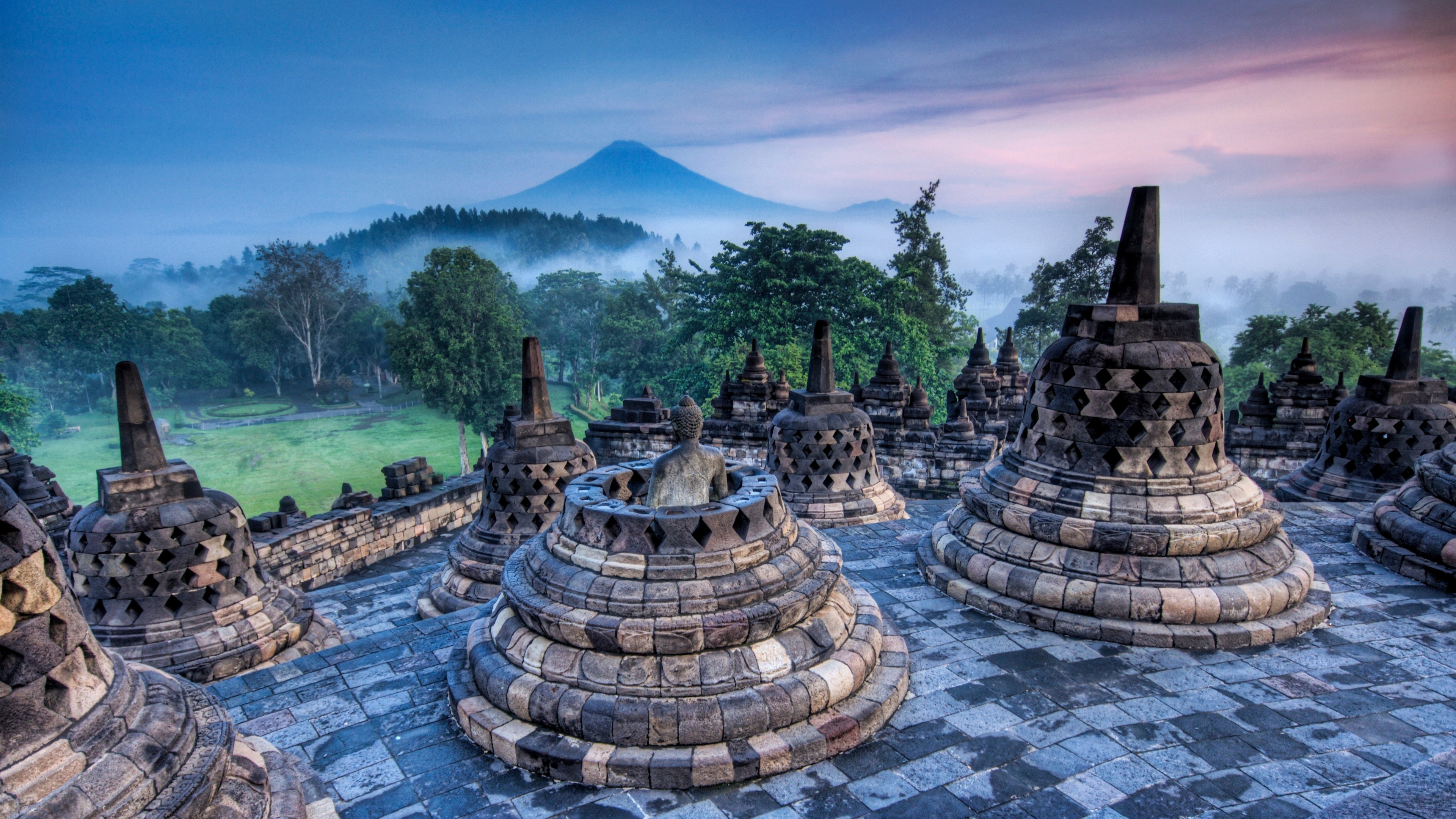
22. Komodo Kingdom: Home of the Giant Lizard
Indonesia, an archipelago of stunning diversity, boasts the notorious Komodo dragon as one of its most fascinating inhabitants. These colossal creatures, fully matured, tip the scales at a formidable seventy kilograms, their imposing figures stretching up to an impressive three meters or 9.8 feet. Earning the title of the world’s largest lizard, the Komodo dragon’s presence is not for the faint-hearted.
It becomes imperative for those venturing into the nooks of Indonesia to not merely glance but engage with the intricate tapestry of this ecosystem, ensuring an encounter with these majestic reptiles. The sheer weight of their existence encapsulates the essence of Indonesia’s biological richness, offering a unique spectacle for those with the courage to confront the Komodo situation.
23. Kopi Luwak: The Peculiar Elixir
Indonesia, with its rich tapestry of exports, boasts one particularly peculiar commodity – Kopi Luwak, colloquially known as Cat Poop Coffee. This exotic brew has earned the distinction of being the world’s most expensive beverage, commanding an astonishing price tag of approximately US$1,000 per pound. The intricate process of crafting Kopi Luwak begins with small, catlike civets being fed coffee berries.
Following digestion, these berries are meticulously collected, thoroughly washed, and then ground into espresso. The resulting coffee is touted to possess an unparalleled richness and a nuanced absence of the typical bitterness found in conventional blends. The enigmatic journey from the civet’s digestive system to the coffee cup creates a sensory experience that transcends the ordinary, making Kopi Luwak a captivating and, indeed, an extravagant indulgence.
24. People, Diversity, and the Lure of Java
Beneath the expansive skies of Indonesia, a nation teeming with life and vitality, a diverse tapestry of humanity unfolds. Home to a populace of 238 million individuals, Indonesia proudly claims the rank of the fourth most populous nation on Earth, standing shoulder to shoulder with global giants like China, India, and the United States. At the heart of this populous nation lies the island of Java, a bustling epicenter of life where over 140 million people coexist in a harmonious yet dynamic dance of cultures and traditions. Java, with its pulsating energy, emerges as the most populous island on our planet, a testament to the vibrant tapestry of human life woven across Indonesia’s archipelagic expanse.
25. Sembako: Culinary Essence of Indonesia
In the culinary lexicon of Indonesia, the term “sembako” encapsulates the essence of the nation’s gastronomic identity. Sembako represents a curated list of nine indispensable culinary components, each playing a pivotal role in the intricate dance of flavors that define Indonesian cuisine. The constituents of this culinary symphony include rice, sugar, egg, meat, flour, corn, gasoline, cooking oil, and salt.
The significance of these ingredients extends beyond the kitchen, resonating through the socioeconomic fabric of the nation. Any disruption, be it the unavailability or soaring costs of these essential elements, ripples through the daily lives of Indonesians, sending shockwaves that reverberate even to the highest echelons of power, impacting the very presidency itself.
26. Micro Wonders: Pedosyspris Pregenetica’s Indonesian Abode
Indonesia is not only home to gigantic predators but also harbors some of the tiniest inhabitants on the planet. Enter Pedosyspris pregenetica, the minuscule fish that claims the title of the smallest fish habitat globally, measuring a mere 7.9 mm in length. This diminutive aquatic marvel, existing in the waters of Indonesia, adds a layer of intrigue to the country’s biological tapestry. The petite proportions of Pedosyspris pregenetica stand testament to the diverse range of life forms thriving in the Indonesian waters. This microscopic wonder captures the attention of those willing to delve into the intricacies of Indonesia’s aquatic world, unveiling the delicate balance of its ecosystems.
27. Indonesia’s Height Quotient: The World’s Diminutive Dwellers
Indonesia, nestled in the heart of Southeast Asia, boasts a unique claim to fame as the world’s shortest nation, as discerned by the typical height of its male denizens. However, this intriguing distinction comes with a caveat, a subtle asterisk in the annals of anthropometric analysis. It is paramount to note that the available height data encompasses a mere 101 nations worldwide. This statistical limitation prompts contemplation on the broader global spectrum and its implications for our understanding of human physiognomy.
28. Oceania’s Apex: Puncak Jaya in Continental Context
Within the Oceania region, Puncak Jaya reigns supreme as the preeminent summit, eclipsing all rivals with its towering stature. The prominence of this mountain not only solidifies Indonesia’s standing in the continental hierarchy but also beckons intrepid explorers to conquer its challenging slopes. The Seven Summits, a testament to Earth’s geological diversity, find representation in Puncak Jaya, underscoring Indonesia’s pivotal role in the global tapestry of elevated terrains. As mountaineers ascend their slopes, they embark on a journey that transcends national borders, forging a connection with the sublime forces that shape our planet’s majestic landscapes.
29. Archipelagic Majesty: Indonesia’s Island Tapestry
Indonesia stands as an unrivaled geographical marvel, proudly wearing the crown of the world’s largest nation composed entirely of islands. A staggering total of 17,508 islands collectively contribute to the nation’s geographical mosaic, a tapestry woven with diverse landscapes, cultures, and ecosystems. Among this vast archipelago, approximately 6,000 islands are graced with the presence of human inhabitants, each fostering its own distinct identity and contributing to the rich cultural fabric that defines Indonesia.
30. Rafflesia Arnoldii: The Enigmatic Giant of Sumatran Flora
Within the lush landscapes of Sumatra, an indigenous marvel known as Rafflesia Arnoldii commands attention. This colossal blossom, boasting a weight of up to 8 kilograms, stands as the largest individual flower on Earth. Yet, its grandeur is accompanied by an olfactory intrigue, as the Rafflesia emits a robust and, to many, unpleasant odor. Aptly dubbed the “corpse flower,” this botanical giant ensures that its presence is known long before it comes into view, creating an otherworldly sensory experience for those fortunate enough to encounter it amid the verdant expanses of Sumatra’s islands.
31. Borobudur: A Timeless Marvel of Buddhist Grandeur
Indonesia’s allure extends beyond botanical curiosities to embrace architectural wonders. In the heart of Java, the UNESCO World Heritage Site of Borobudur emerges as the world’s largest Buddhist temple, a sublime testament to ancient craftsmanship. Dating back to the eighth and ninth centuries, this sacred site stands as an architectural and spiritual masterpiece. Its vast structure hosts an intricate network of 72 stupas, each enshrining a dignified statue of the Buddha. As the sun sets over the Indonesian horizon, Borobudur whispers tales of a bygone era, inviting contemplation amidst the timeless elegance of Buddhist grandeur.
32. Indonesia’s Archipelago: A Mystical Tapestry of Islands
Indonesia, an enchanting archipelago, beckons explorers with a captivating revelation—the sheer diversity of its island realm. A staggering 17,000 islands dot the Indonesian map, forming an intricate tapestry woven by nature herself. Astonishingly, only a third of this vast archipelago is inhabited, leaving the majority veiled in a mystique that intrigues even the most seasoned travelers.
What adds to the allure is the revelation that many of these islands remain unnamed, shrouded in the mystery of undiscovered realms. The expansive network of Indonesian islands sprawls across a combined area exceeding 5000 kilometers, a testament to the nation’s geographic magnitude and the endless possibilities that await those who dare to explore its uncharted waters and untouched landscapes.
33. The Unique Rituals of Affection: Cium and Beyond
Embark on a cultural odyssey in Indonesia, and one is bound to encounter the intriguing nuances of expressions of affection, notably encapsulated in the term “cium,” translating to “to sniff.” The customary greeting in Indonesia takes on a distinct form, where kissing is transformed into a nuanced act of sniffing each other’s cheeks.
This cultural idiosyncrasy, laden with meaning and history, serves as a testament to the nuanced approach Indonesians adopt in their interpersonal relationships. Delving deeper into the cultural mosaic, certain regions elevate this practice to an even more intimate level—families, in a display of affection, engage in nose-rubbing, a gesture that, while innocent in familial contexts, carries the potential to transcend into the realm of foreplay, unveiling the intricate layers of societal norms and interpersonal dynamics.
34. Indonesia’s Rich Biodiversity: A Global Marvel
Indonesia, a nation adorned with the lush tapestry of nature, proudly claims the second-highest level of biodiversity on Earth, standing only next to Brazil. The sheer abundance of its natural world sets Indonesia apart as a global marvel, showcasing a spectrum of ecosystems that range from the dense rainforests of Borneo to the majestic landscapes of Papua/New Guinea and the vibrant terrains of Sumatra. This Southeast Asian gem emerges as a sanctuary for an astounding variety of flora and fauna, contributing significantly to the planet’s ecological diversity.
35. Economic Disparities in Indonesia
Within the intricate landscape of the G20, Indonesia stands as a noteworthy player, showcasing the paradox of economic vitality juxtaposed against pervasive poverty. A striking revelation unfolds when delving into the nation’s socioeconomic tapestry – a staggering half of Indonesia’s populace grapples with the harsh reality of subsisting on a meager sum, a paltry existence beneath the ominous threshold of US$2 per day. This incongruity paints a vivid picture of a nation grappling with the intricate dance between economic prominence and the stark struggles of a substantial portion of its people.
36. Conglak: A Cultural Tapestry Weaving Through Time
In the vibrant mosaic of Indonesian culture, the game of Conglak, with its roots tracing back to ancient Egypt, stands as a fascinating testament to the interconnectedness of civilizations. This captivating game, etched in the annals of history, likely found its way to Indonesia through the vibrant tapestry of trade, carried by the hands of Indian or Arab merchants.
Onglak unfolds on an intricately carved wooden board, a striking 18-inch masterpiece adorned with seven cup-like indentations on both sides and one at each end. Within these recesses, a symphony of 98 cowrie shells, stones, or beads awaits, each holding the potential for strategic maneuvers. The objective: a delicate dance to move these pieces deftly, orchestrating a symphony that culminates in the accumulation of treasures within one’s “home” cup. As players engage in this ancient pastime, they unknowingly become part of a cultural continuum, weaving threads that connect Indonesia to distant civilizations across time and space.
37. The Spectrum of Gender Expression in Indonesian Societies
Dive into the rich tapestry of Indonesian societies, and one encounters a remarkable spectrum of acceptance regarding gender expressions. A captivating facet of this cultural milieu is the acceptance of “Banci,” individuals who transcend traditional gender norms. Banci, embracing a role that extends beyond conventional boundaries, manifests as males who seamlessly adopt the attire and comportment traditionally associated with women.
These figures, far from being marginalized, carve out distinctive niches within Indonesian culture, assuming roles as diverse as matchmakers, artisans, performers, healers, and ritual specialists. Their presence not only challenges but enriches the intricate fabric of societal norms, injecting a unique vibrancy into the cultural narrative.
38. Indonesia’s Island Splendor: A Triumvirate of Grandeur
Among the colossal land masses dotting our planet, Indonesia stands out with distinction, harboring three of the ten largest islands globally. Borneo, Papua/New Guinea, and Sumatra, each a titan in its own right, grace Indonesia with its vast landscapes and unique ecosystems. These islands, each a testament to the raw grandeur of nature, collectively add to the allure of Indonesia, making it a geographical titan on the world stage.
39. Faith and Unity: Indonesia’s Religious Tapestry
Within the diverse mosaic of Indonesia, a tapestry of faith unfolds. The nation officially recognizes a mere six religions: Islam, Hinduism, Catholicism, Protestantism, Confucianism, and Buddhism. This seemingly inclusive embrace, however, takes a curious turn in the legal realm. Every Indonesian citizen is mandated to align with one of these six religions, an official subscription that transcends personal faith.
The intricacies deepen as love navigates religious waters; couples of different faiths find themselves at a crossroads, bound by the necessity of conversion for a harmonious union. Indonesia’s religious landscape, therefore, is a complex canvas where personal beliefs and legal mandates entwine in an intricate dance of faith and unity. aRes Travel: Discounted Vacation packages & Travel Planning
40. Tsunami Tragedy and Earth’s Shift: Sumatra 2004
A cataclysmic event etched into the annals of natural disasters unfolded on December 26, 2004, off the coast of the Indonesian island of Sumatra. The world shuddered as the Earth convulsed with the force of the second-largest recorded earthquake, a seismic behemoth registering a magnitude of 9.3 and beyond. The repercussions were devastating, as a colossal tsunami surged across the Indian Ocean, unfurling its destructive fury upon over a dozen nations.
The aftermath painted a grim tableau – a toll exceeding 300,000 lives lost or missing, and millions displaced. Remarkably, the earthquake’s force was so potent that it reportedly induced a wobble in the Earth’s axis and reshaped the very landscape, shifting surrounding land masses by an astonishing 12 feet (36 meters). This seismic saga not only left indelible scars on the affected regions but also underscored the volatile power wielded by nature, prompting contemplation on humanity’s resilience in the face of such colossal forces.
More Interesting Articles
- 60 Interesting Facts about Kathmandu City Nepal
- 30 Interesting Facts About the Flag Of Scotland
- 15 Interesting Fun Facts – Everland Theme Park, South Korea
- 75 Awesome Washington DC USA Interesting Fun Facts
- 70 Archipelago Ibiza Spain Interesting Fun Facts Trivia
- 33 Gyeongbokgung Palace South Korea Interesting Fun Facts
- 29 Andaman and Nicobar Islands Interesting Fun Facts
- 40 Irish Saint Patrick’s Day Interesting Fun Facts
- 25 Interesting Fun Facts About Nami Island South Korea
- 89 Wonders of the World One Must See in Lifetime
- Cultural Wonders of the World – A Complete List
- 22 Pashupatinath Temple Nepal Interesting Fun Facts
- List of 54 Greatest Empires in Entire History Timeline
- 100 United Nations Facts – The UN Basic Facts for All
- 100 Plateau of Tibet Facts to Astonish You
- 200 Kazakhstan Fun Facts Everyone Should Know
- 125 Interesting Facts about Hungary You Must Enjoy
- 200 Interesting Facts about Poland for Travelers
- 200 Cool Facts about Germany to Surprise You
